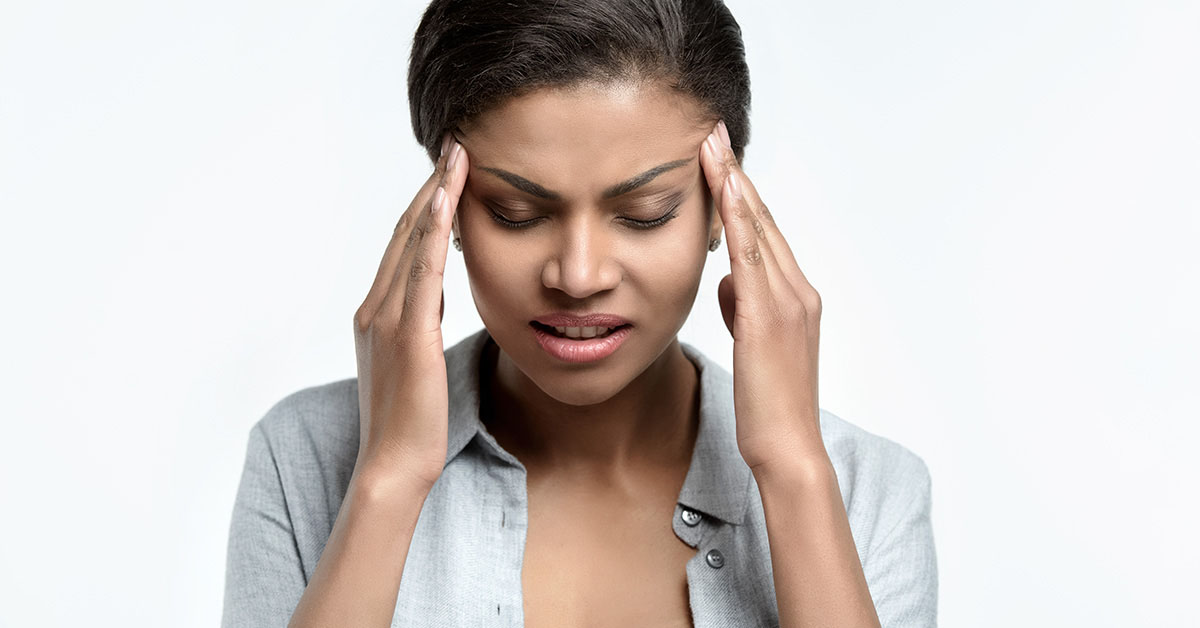
Air-filled spaces that can be found inside the forehead, cheekbones, and behind the bridge of the nose are known as sinuses. When sinuses become inflamed due to an infection or allergic reaction, they swell, produce more mucus, and block the channels that are responsible for draining them.
Pressure buildup inside of the sinuses leads to pain and resembles a headache. It is important to understand that sinus headaches may actually be two conditions: sinusitis and migraines. Believe it or not, more than 4 out of 5 people who believe they have sinusitis actually have a migraine. It's vital to differentiate between the two conditions because they require different treatments. Let's dive deeper into sinusitis vs. migraines.
Symptoms of Sinusitis and Migraines
Patients with sinusitis and migraines may experience forehead pain, itchy or watery eyes, and/or pain during movement. However, only those with migraines may face nausea or vomiting, light or sound sensitivity, and/or severe throbbing pain on one side of the head. In addition, a fever and yellow, green, or bloody mucus are symptoms only seen in patients with sinusitis.
Migraines typically arise in patients who often cope with severe headaches. Sinusitis, on the other hand, is caused by infection and inflammation of the nasal passages, which leads to congestion as well as pain and pressure in the forehead and behind the cheekbones. Patients with sinusitis do not initially complain of a headache.
Treatment of Sinusitis and Migraines
Treatment for patients with sinusitis usually involves decongestants, pain relievers, and nasal irrigation to assist with drainage while reducing sinus pressure and congestion. Antibiotics and nasal steroids may help as well. If a patient's sinusitis is caused by an infection, it should fade as soon as they begin treatment.
When it comes to treating migraines, the focus is on preventing migraines as well as reducing how often patients develop them and how long they last. Migraine treatment involves more than simply stopping migraines once they begin.
There are special medications known as triptans that can alleviate pain during a migraine attack and assist patients in resuming their daily activities. Other drugs that were initially designed to treat high blood pressure, depression, and epilepsy may prevent migraines too. Botox injections - which were originally developed as cosmetic treatments to treat fine lines and wrinkles - may be an effective migraine treatment as well.
Visit a Doctor to Accurately Diagnose the Condition
Since it can be a challenge to differentiate sinusitis from migraines, patients who believe they have one of these conditions should seek medical attention right away. By doing so, they'll know exactly which types of treatments will improve their condition and be able to find the relief they deserve.



